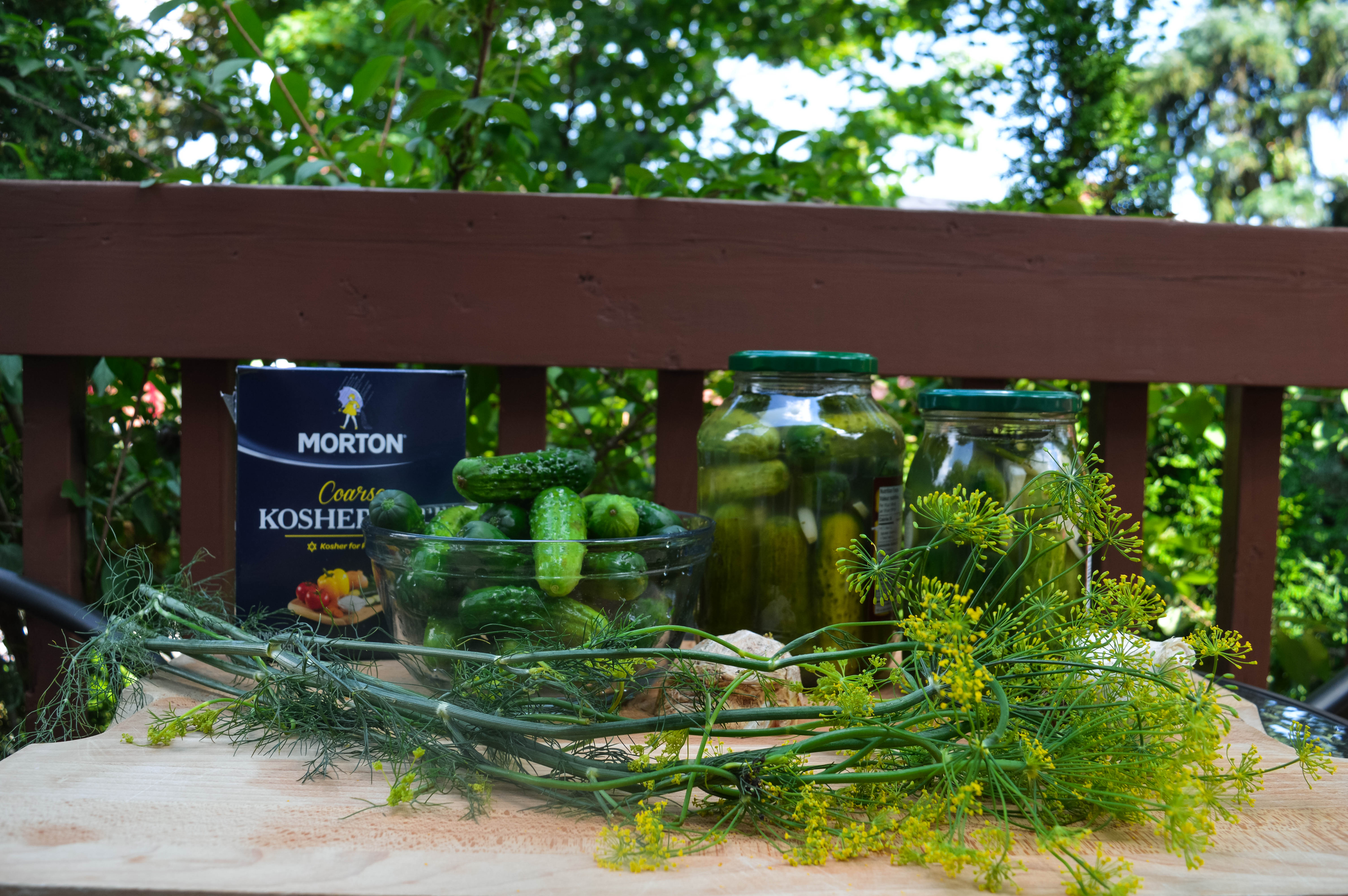Every year for as long as I remember in August my mom would make fermented pickles. She would make two batches. One was to keep over winter the other was a lightly salted version for the summer months.
This version is the one she would make for the winter. Granted, as soon as they are ready you can open the jar and have a pickle. They are wonderfully crunchy, sour and salty. They are also a great source of probiotics. Perfect for sandwiches, egg salads, or on a burger.
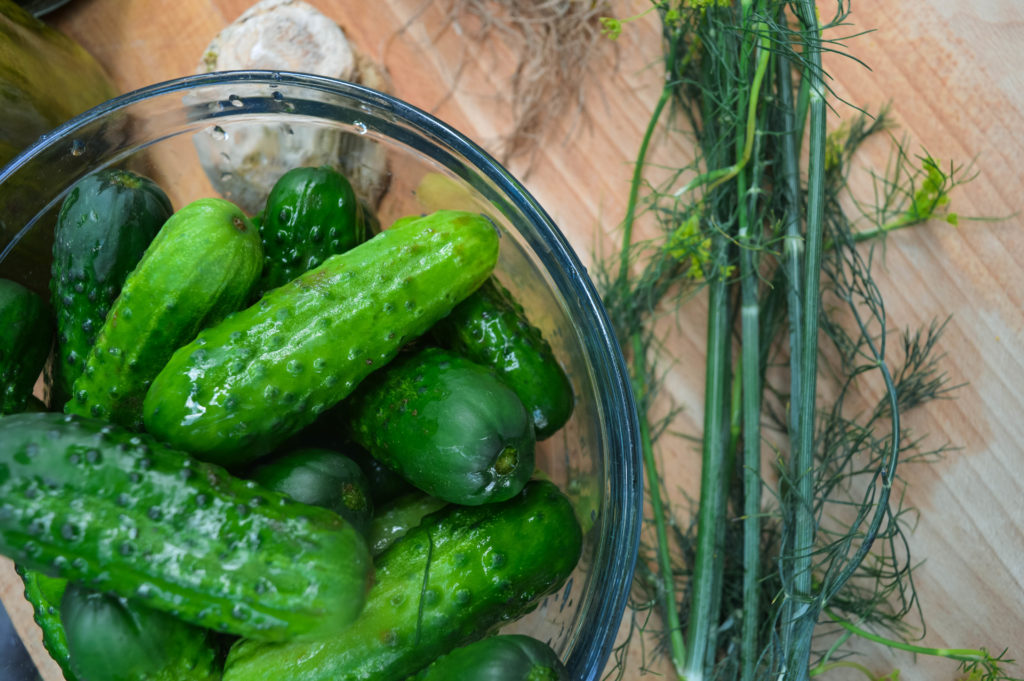
This is an easy recipe and all you need besides the ingredients are old jars. You can get yourself some but if you have larger glass jars with their lids those are perfect. The jar should at least hold 1 1/2 – 2 litres. Repurpose and Reuse. Make sure that they are very clean. Washing them in hot water, being particularly thorough with the jar’s mouth and the lid.
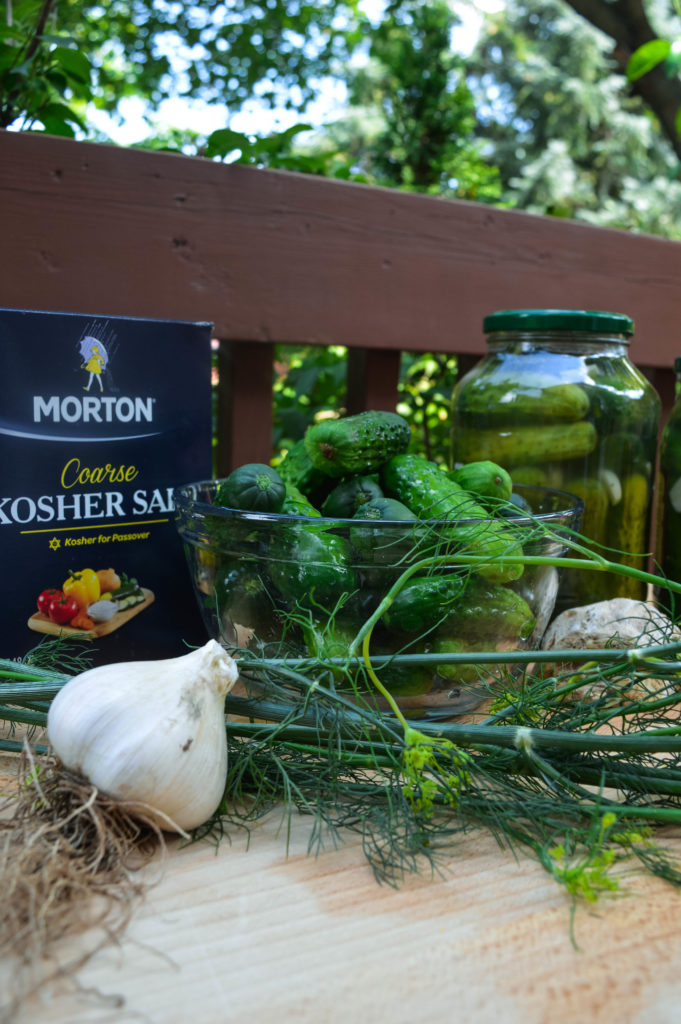
For this recipe, you will need smaller cucumbers, known as “pickling” cucumbers or gherkins. Gherkins can be found throughout August into September at farmers’ markets.
The pickles are flavoured with Dill, Garlic and Horseradish. For dill, you want the flower and the steam, one flower for each jar.
Please note, the amount of salt used in the recipe will not be the same that will be in the jar of pickles. The 2 tbsp of salt needs to be dissolved in 6 cups of water. The 1 1/2 or 2-litre jar when it contains the pickling cucumbers, garlic, horseradish and dill will not hold the 6 cups. You can always make another jar, a smaller one. Also, depending on the size of the cucumbers you may need more or less than 12 pickling cucumbers.
Also if your garlic turns blue or green, it’s okay. It sometimes happens during the fermentation. It is perfectly safe to consume pickles and blue or green garlic.
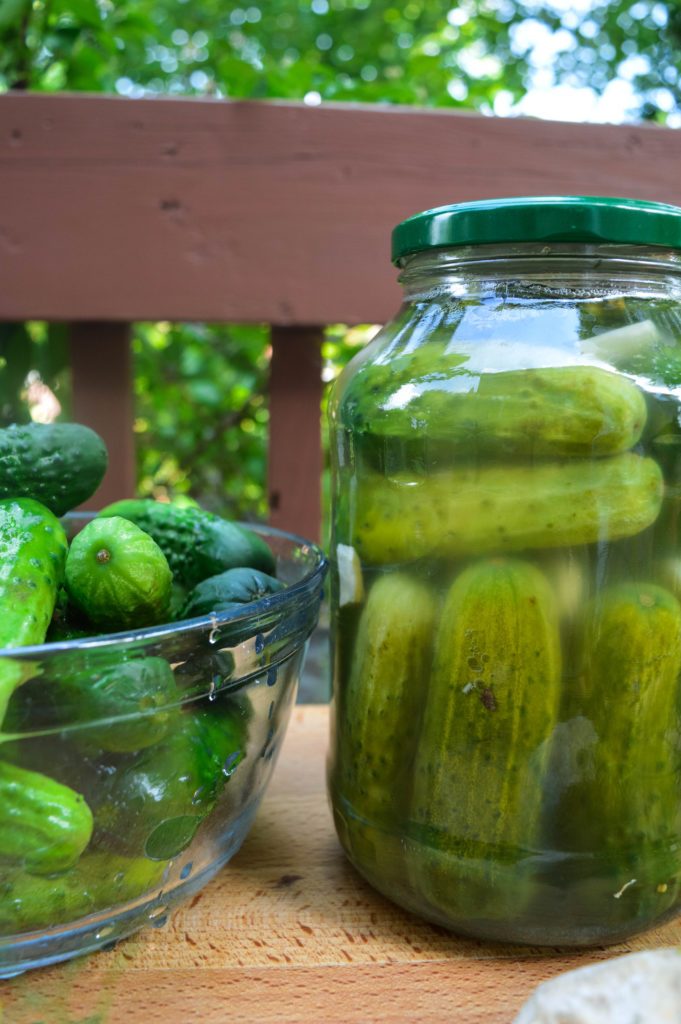
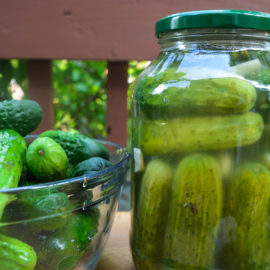
Naturally Fermented Dill Pickles
Ingredients
- 6 cups boiling water
- 2 tbsp kosher salt heaping tablespoons
- 12 cucumber
- 1 dill steam and flower
- 4 garlic cloves halved
- horseradish root 1-inch cube
Instructions
- Make sure that the jars (1 1/2 – 2 litres) you will be using are clean, lids included.
- Bring 6 cups of waters to a boil, add in 2 tbsp of salt and let the salt dissolve.
- In a clean jar begin my placing pickling cucumbers upright to fill the bottom of the jar. In the middle a few garlic clove pieces and horseradish. Layer more cucumbers on top, leave space at the top of the jar for the dill and to leave oxygen within the jar.
- Roll the dill flower and steam into a tight ball and place it at the top of the jar. Once again make sure that the jar is not too full.
- Cover the pickling cucumber with boiling salt water leaving a cm below the ridges on the jar. Cover immediately and tighten.
- Move the jar to a corner area of your kitchen counter (do not hold by the lid) and keep it monitored there for a few days. You will notice the process of fermentation by the 24-48 hours.
- If you find that the jar is leaking, let it stay on your counter for a day or two the fermentation process should seal it up. If not you can move it into the fridge and just have lightly fermented pickles.
- After a few days on the counter, if the jar is properly sealed and not leaking move the jar into a dark cool place. A cold room or a cupboard in your kitchen would work great.
- After two weeks you can move it into your fridge and enjoy the fermented dill pickles or leave it where they are for 2-3 months.
Nutrition
Amanda Filipowicz is a certified nutritional practitioner (CNP) with a bachelor in environmental studies (BES) from York University. She also has certification in clinical detoxification, prenatal and postnatal care as well as nutrition for mental health. She has been working as a nutritionist since 2013 and is a lifelong proponent of eating healthy.

